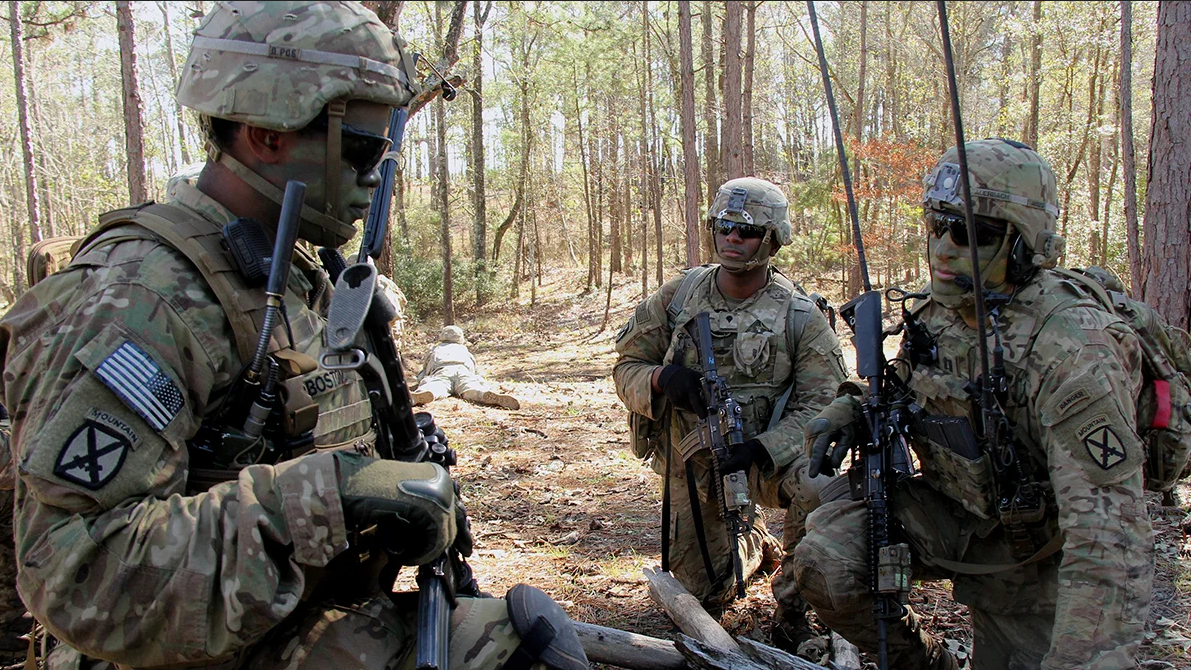Paper: CTCs Must Adapt to ‘Realities of Modern Warfare’
Paper: CTCs Must Adapt to ‘Realities of Modern Warfare’

As the Army’s premier training venues for maneuver formations, combat training centers must evolve to match the realities of modern warfare, according to the author of a new paper published by the Association of the U.S. Army.
This includes wargaming pre-deployment activities with an emphasis on critical infrastructure, writes Capt. Daniel Eerhart, a psychological operations officer serving as a cyber policy, law and strategy research scientist at the Army Cyber Institute, in “Training Outside ‘The Box.’ ”
“The realities of modern warfare are that America’s principal adversaries can disrupt any step in the deployment process,” Eerhart writes. “This paper contends that the addition of an information warfare company to the opposing force (OPFOR) battalions can better prepare rotational training units at combat training centers (CTCs) for the difficulties of modern warfare.”
Wargames “are analytic games that simulate aspects of warfare at the tactical, operational, or strategic level,” according to the Rand Corp.
Eerhart cites an exercise called Jack Voltaic, conducted in 2020 by the 3rd Infantry Division and Fort Stewart, Georgia, with the Army Cyber Institute, as an example of wargaming that could benefit the entire Army.
“Throughout the exercise, cyber threat actors severely degraded the 3rd Infantry Division’s ability to get their equipment from Fort Stewart to the port,” he writes. “The 3rd Infantry Division should not be alone in wargaming through friction points in its deployment plan. After all, wargaming, as part of the course of action analysis, is essential to any military decisionmaking process.”
Adding an information warfare company to the opposing force battalions would expose soldiers to tactical deception used in real-world combat operations, as well as enemy misinformation and disinformation. It also would support cyber integration into tactical units, Eerhart writes.
Combat training centers also need to harden soldiers against microtargeting, where enemies influence soldiers’ behavior through data and targeted advertising, Eerhart writes. “Servicemembers … are likely to be targeted by adversary microtargeted influence warfare,” he writes. “While the [combat training centers] provide world-class training venues that replicate the complexities of a combat environment, their training … does not address individual Soldier targeting that adversaries are known to conduct.”
Incorporating wargaming into pre-deployment operations at combat training centers is key to ensuring soldiers are protected against modern threats and enhancing the Army’s power projection capabilities, Eerhart concludes.
“By expanding the training scope of combat training centers, the Army can ensure that units stand ready to face future adversaries while protecting its soldiers from the asymmetric risks they face,” he writes. “Wargaming pre-deployment activities with an emphasis on critical infrastructure enhances the Army’s ability to project force while simultaneously supporting the National Cybersecurity Strategy’s emphasis on defending critical infrastructure.”
Read the paper here.

